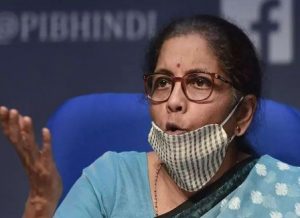National Employment Policy: Contours of a Post-COVID-19 Framework
A comprehensive policy document will effectively help formulating appropriate employment strategies, which ensure decent work, empowerment, and sustainability towards the Atma Nirbhar Bharat.
Indian economy had slowed down before the COVID-19 outbreak, but the ongoing pandemic has pushed it further into a recession. As per the data from the Centre for Monitoring Indian Economy (CMIE), the employment rate has touched as high as 23.5 per cent in the two months of lockdown in April and May 2020. Apart from this, CMIE has also estimated that 27 million youth in the age-group of 20–30 years have lost their jobs in April 2020 because of the lockdown. This will have greater impact on livelihood and jobs in future. Further, these problems differ across regions and sectors of employment. Therefore, recognising these challenges and putting in place appropriate policy responses to tackle them is of utmost priority. As multiple forces ranging from technological advances to climate change to demographic changes transform the world of work, the absence of decisive policy action will further disrupt livelihoods and exacerbate inequalities. The government needs to take appropriate steps urgently to assess the current employment situation in the country, including the macroeconomic environment, demographic context and sectoral challenges in employment generation, following which it has to set targets and monitor them.
per cent in the two months of lockdown in April and May 2020. Apart from this, CMIE has also estimated that 27 million youth in the age-group of 20–30 years have lost their jobs in April 2020 because of the lockdown. This will have greater impact on livelihood and jobs in future. Further, these problems differ across regions and sectors of employment. Therefore, recognising these challenges and putting in place appropriate policy responses to tackle them is of utmost priority. As multiple forces ranging from technological advances to climate change to demographic changes transform the world of work, the absence of decisive policy action will further disrupt livelihoods and exacerbate inequalities. The government needs to take appropriate steps urgently to assess the current employment situation in the country, including the macroeconomic environment, demographic context and sectoral challenges in employment generation, following which it has to set targets and monitor them.
National Employment Policy
The current COVID-19 pandemic has posed extreme challenges across the world with huge losses of jobs and livelihood. Targeting and assisting of the labour force are important because in times of crisis like COVID-19, the focus has been on ‘Garib Kalyan’. Since workers are also human beings, and for their social protection numerous programmes are already in place, the National Employment Policy(NEP) would be important for understanding the dynamics of benefits of workers, employers and governments.
The recent push for the NEP last month by the Minister of Labour and Employment on a fast track is a welcome move. Now the government is again looking forward for a comprehensive NEP at national level to provide a future roadmap for encouraging the employment generation in the post-COVID-19 period. The labour minister has asked the officials to look at the employment policy, while keeping in mind the challenges and disruptions that have occurred due to COVID-19 pandemic. India has ample intellectual and practical knowledge to formulate such a policy that takes into consideration gender, caste and ecological concerns.
A lack of such a policy could result in a warped economic transformation resulting in avoidable stress on employment, social and gender harmony.
Also Read : National Employment Policy: Towards Creating an Atma Nirbhar Bharat
‘Shramik Shashatrikaran’: Labour Empowerment
It is very important to have an Inclusive Policy, which caters to the challenges and needs of the marginalised, women, divyang, etc. The aspirational districts and the priority sectors needing more attention must be identified. This will go a long way in achieving the principles of ‘Sabka Sath, Sabka Vikas, Sabka Vishwas’.
NEP will have immense role in advisory and roadmaps for clarity. Moral suasion and appropriate signalling are important to ensure consistency, predictability and stability and a strong future outlook for ensuring confidence at par with India competitors. This would detail the direction of the economy in a holistic manner. New investment areas, entrepreneurship and innovation initiatives, start-up ecosystem, gig economy, conventional sectors, studies and projects would identify the new and emerging focus areas for continuous feedback into the system.
Research and Development (R&D) is the core of the entire NEP. The policies, schemes of the relevant ministries and committees need to be streamlined. They are important to be studied to collect evidence and provide essential inputs for policy making, since it is an ongoing process. NEP will also be crucial for implementation, monitoring and evaluation. This is important for the Digital India objectives and outcome-based decision making as per the  Ministry of Statistics and Programme Implementation (MoSPI) and NITI Aayog’s recent efforts for data and planning. For this, maintenance of a real-time database and repository and monitoring of the employment status of the labour force are important. It would require enormous efforts in the beginning, but would yield more than proportionate results in the immediate future. There are many schemes for employers and workers, for instance, EPFO, ESIC, PMJDY, MSME, Startups, BOCW, PMSYM, PMSBY, SHGs, and so on.
Ministry of Statistics and Programme Implementation (MoSPI) and NITI Aayog’s recent efforts for data and planning. For this, maintenance of a real-time database and repository and monitoring of the employment status of the labour force are important. It would require enormous efforts in the beginning, but would yield more than proportionate results in the immediate future. There are many schemes for employers and workers, for instance, EPFO, ESIC, PMJDY, MSME, Startups, BOCW, PMSYM, PMSBY, SHGs, and so on.
In times of disasters and state and national emergencies, the NEP would provide a backbone and architecture to complement the efforts of the government and maximise relief to the affected families and enterprises. This would minimise economic losses and optimise the use of limited resources.
This would complement PM’s vision of New India and achieving the US$ 5 trillion economy having special emphasis on Shramik Samman Evam Sashaktikaran (Labour Respect and Empowerment).
Also Read : COVID-19: Social Media and Cause of Migrant Workers
Atma Nirbhar Bharat and New India
NEP can provide 360° framework, having inclusive and sustainable planning and enabling environment and holistic impactful approach towards decent employment and vision of New India. The Sustainable Development Goal (SDG-8) states—promote sustained, inclusive and sustainable economic growth, full and productive employment and decent work for all.
The consultation paper for draft National Urban Policy Framework 2018 is an important document template for NEP to start taking shape. In the past, most policy documents pertaining to conceive a NEP, by and large, have been suggestive in nature. There is an urgent need for a comprehensive NEP based on responsive real-time data analysis integrating sectors that will help emerge sectoral employment policies and programmes amid the COVID-19 pandemic. The preparation of the NEP warrants a broad-based national consensus among various stakeholders. This can be ensured through a consultative process by taking various stakeholders views and the constituents’ demands to be taken into consideration during the policy formulation process. The most important part of the policy is to formulate a link between the policy options and budgetary allocation and/or financial mechanism considering the convergence among various department or sectors. Further, an institutional framework detailing the roles and responsibilities for the implementation and monitoring of progress should be also the part of policy document. Such policy document will effectively help formulating appropriate employment strategies, which ensure decent work, empowerment, and sustainability towards the Atma Nirbhar Bharat and contribute significantly to achieve the goals of the 2030 Agenda for Sustainable Development.
(This is the second part of the article “National Employment Policy: Towards Creating an Atma Nirbhar Bharat” by the authors published yesterday)
